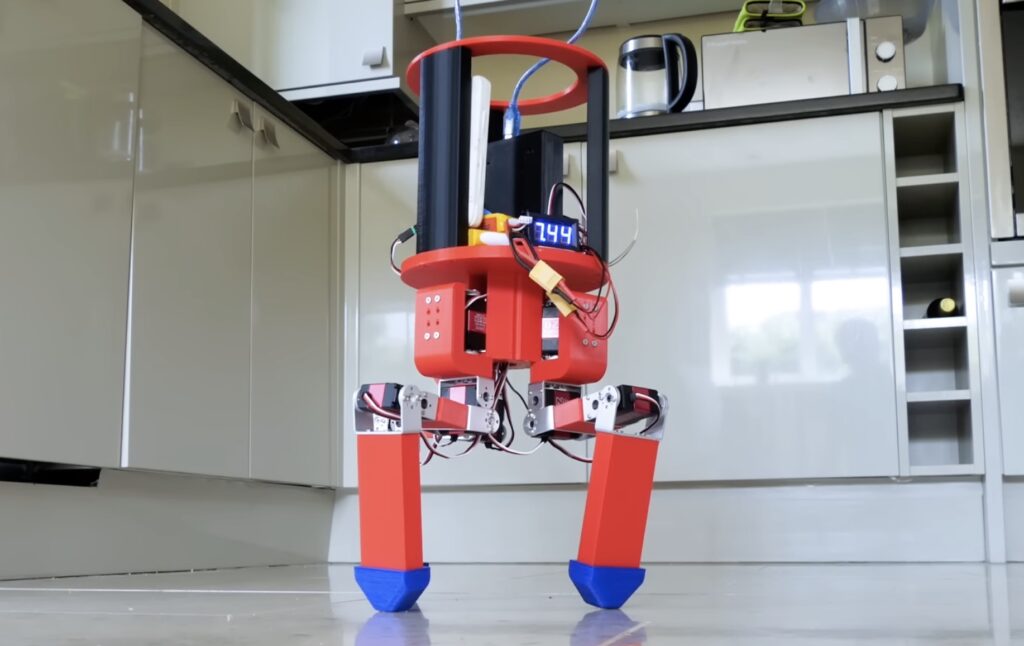Can tripedal robots actually walk?

Building walking robots is difficult, because they either need a lot of legs or some ability to balance through their gait. There is a reason that the robots designed by companies like Boston Dynamics are so impressive. But lots of hobbyists have made bipedal and quadrupedal robots, while largely ignoring tripedal robots. To find out if they could be practical, James Bruton created a prototype tripedal robot.
When compared to a bipedal robot, a tripedal robot is more stable when standing still. But a bipedal robot is more stable when walking. That’s because it can keep its center of gravity almost directly above the foot that contacts the ground. A tripedal robot, on the other hand, needs to attempt to balance on two legs while move the third, while the center of gravity is somewhere above the middle of a triangle formed by the three feet. That makes walking gaits difficult to achieve.
Bruton built this prototype using a 3D-printed body, legs actuated by servo motors, and an Arduino Mega 2560 for control. The three legs are arranged with radial symmetry and each leg has three joints. Bruton attempted to give the robot a gait in which it tries to momentarily balance on two legs, while lifting and swinging the third around.
But that was very inefficient and clumsy. Bruton believes that he could achieve better results by equipping the robot with an IMU. That would give it a sense of balance, which could help it remain steady on two legs through a gait. With a counterbalancing weight, that could make a big difference. But for now, Bruton is putting this experiment on the back burner.